Are You Gripping Your Glutes Without Realizing It? Here's What Will Help.
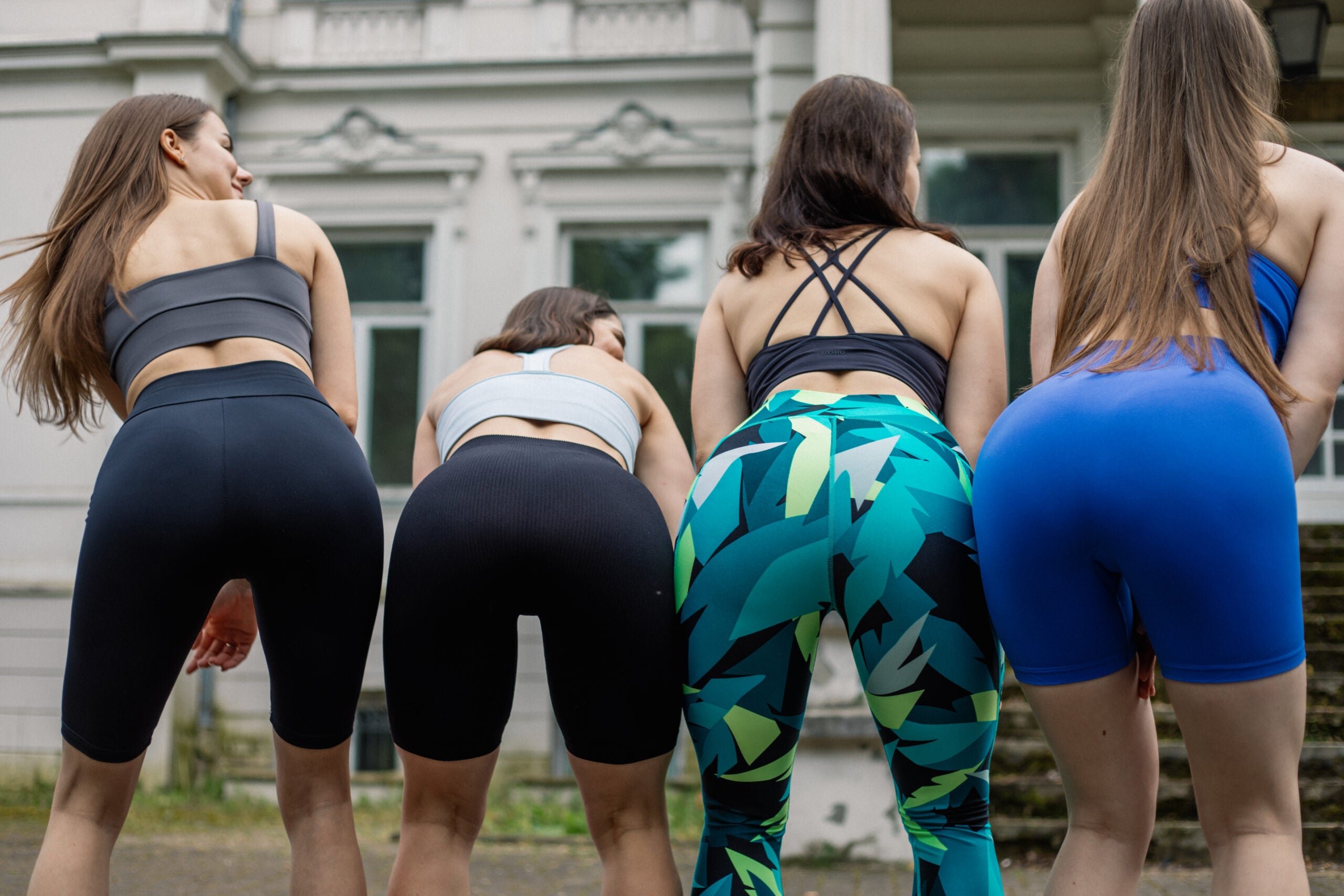
(Photo: Tatsiana Volkava | Getty)
Have you ever been in Savasana and your yoga teacher cued you to relax a muscle group that you had no idea you were already clenching? This is often the case with the jaws, that pesky space between the eyebrows, and yes, the butt. Inadvertent glute clenching may sound harmless, although it’s anything but (pun not intended).
Activating the glutes when you’re walking, running, climbing stairs, or engaging in other everyday movements is normal—but clenching them mindlessly while brushing your teeth or standing in front of your fridge? Not ideal. Habitual glute clenching can even be your body’s way of telling you something. And, over time, it can create imbalance in your body.
“Many people are ‘secret butt clenchers,’ unaware they’re holding tension throughout the day,” says Tanya Goodrich, pelvic physical therapist, and owner and founder of Healthy Pelvis Physical Therapy, in San Francisco, CA. “Glute clenching can be very unconscious, becoming a habit without people realizing it,” says Goodrich.
But there are ways to draw your awareness to it.
What Does Glute Clenching Feel Like?
Glute clenching involves a subtle, near-constant squeezing of the butt muscles and is often accompanied by an unintended tucking of the tailbone.
Beyond the most obvious sign (namely, you notice you’re tightening your butt muscles), glute clenching can feel like:
- Mild tension or tightness in your glutes
- Low back discomfort
- Difficulty fully relaxing the pelvic region
What’s Wrong With Constantly Clenching Your Glutes?
Outside of physical activity, constantly clenching the glutes isn’t beneficial for the body. “While the glutes should activate dynamically during movement for both active and stabilizing purposes, they should not stay in a chronic state of contraction during rest or standing,” says Lara Heimann, physical therapist, E-RYT 500, and creator of the LYT Yoga Method based in Monterey, MA.
According to Heimann and Goodrich, habitual glute clenching can be an unconscious way to compensate for imbalances elsewhere in the body, including weak core muscles, pelvic floor dysfunction, overly tight hip flexors, instability in the hips and pelvis, or poor posture.
Just as the lower back and other muscles can tense in response to emotional stress, so can the glutes, according to Goodrich. If you’re feeling particularly anxious or fearful about something in your life, clenching your glutes might be an unconscious response, she adds.
Heimann says that in her experience, people who clench their glutes also tend to clench their jaw, a trait that is sometimes linked with anxiety.
While muscular imbalances can lead to glute clenching, the latter can also perpetuate existing imbalances—an unfortunate double whammy.
These include:
- Tension in the low back
- Tight hip flexors
- Pelvic pain or dysfunction
- Inhibition of other stabilizing muscles, such as the deep core and hip rotators
“It’s important to distinguish between ‘activating’ the glute muscles for functional purpose versus ‘clenching’ the glutes as a compensatory response,” Heimann says.
How to Avoid Butt Clenching
When it comes to glute clenching, less is more.“Simply noticing when you’re clenching can significantly reduce habitual gripping,” says Goodrich.
That can take practice. When you notice you’re unnecessarily squeezing the muscles, visualize them relaxing or adjust your seated or standing position to make it easier to let go of tension. Stretching is another helpful way to tune into when your glutes are engaged and encourage them to release. Over time, as your awareness grows, you’ll build a new habit of relaxing your glutes.
Yoga can also help.
“A well-structured yoga practice can restore balance by improving posture, core strength, and hip mobility, which will help to better regulate the nervous system,” says Heimann. “Yoga can help retrain the body to activate the glutes appropriately, engaging when needed and relaxing when not.”
The following poses can help bring awareness to the glutes, relax them, and prevent butt gripping on and off the mat.
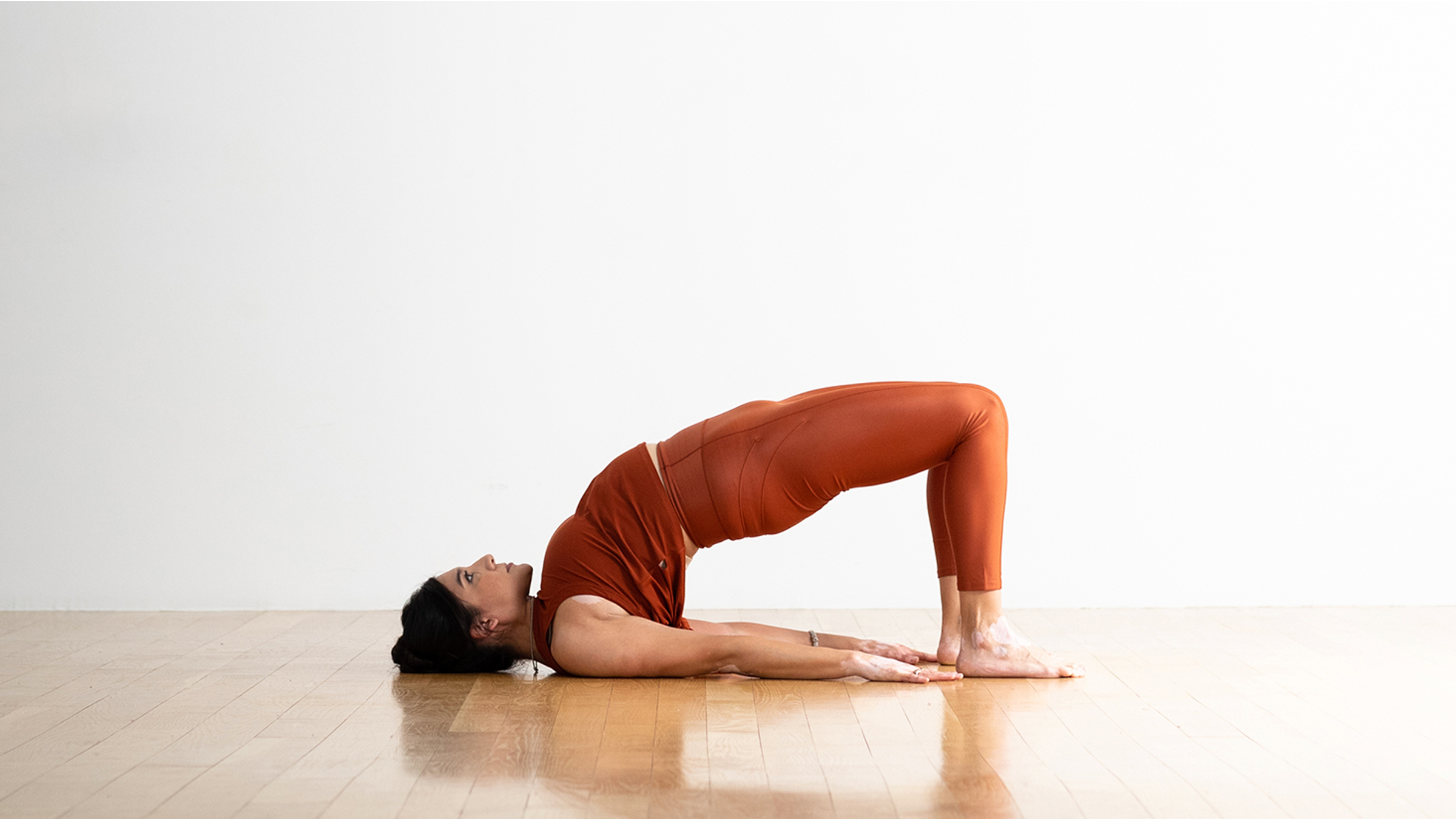
1. Bridge Pose
Bridge Pose (Setu Bandha Sarvangasana) helps strengthen the glutes, promote pelvic alignment, and retrain over-clenching patterns, while also reducing unnecessary gripping. And proper alignment is more important than how high you lift your hips.
“Focus on lifting with the glutes while maintaining a neutral pelvis,” says Heimann. Engaging the glutes in this pose, but avoiding overly squeezing them, can bring awareness to a balanced level of glute engagement
How to Practice Bridge Pose
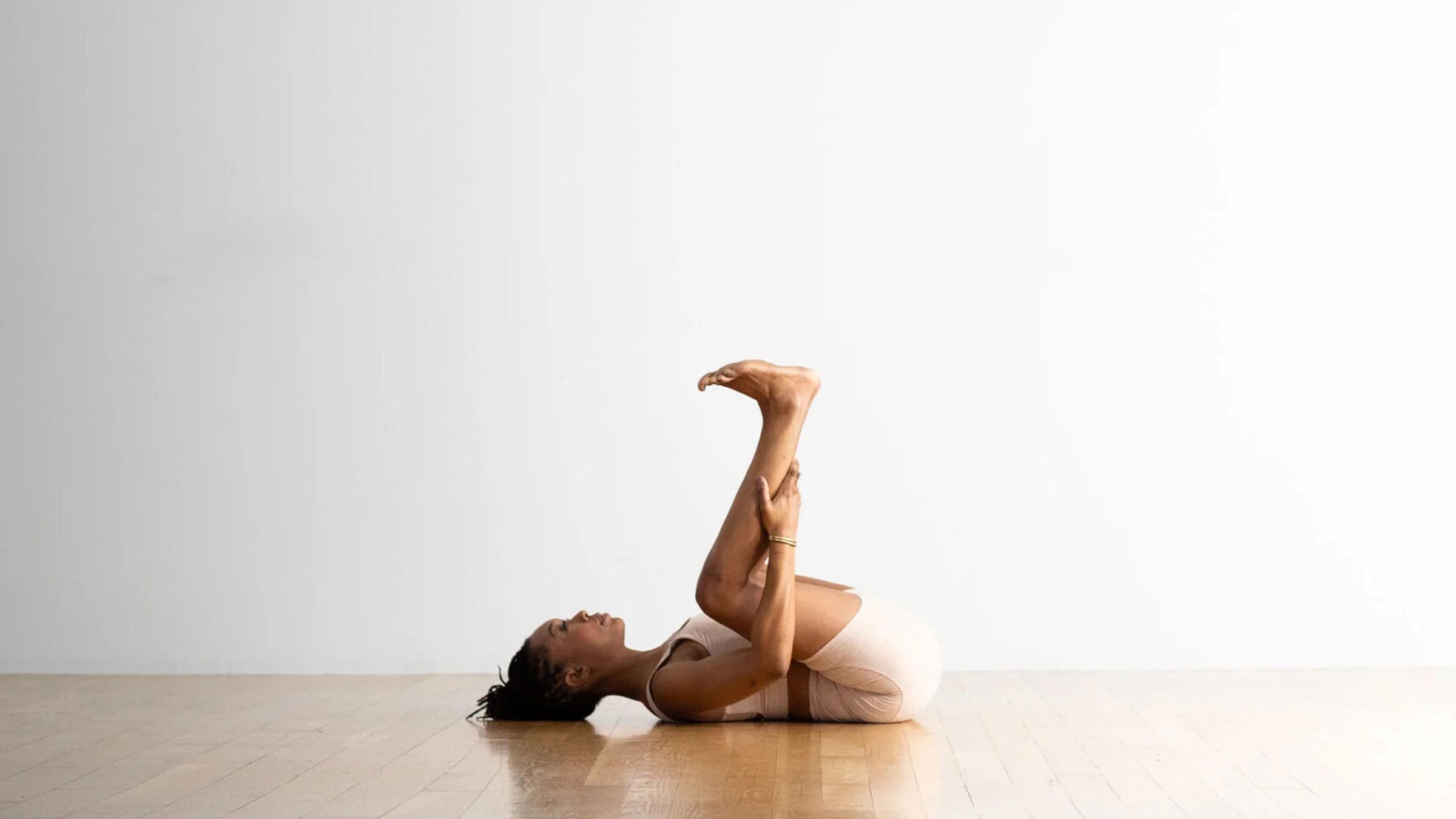
2. Happy Baby Pose
It’s not a coincidence that Happy Baby can feel incredibly refreshing at the end of a yoga practice. Happy Baby is an effective hip opener, but it can also release the pelvic floor and relax tight glutes.
How to Practice Happy Baby Pose
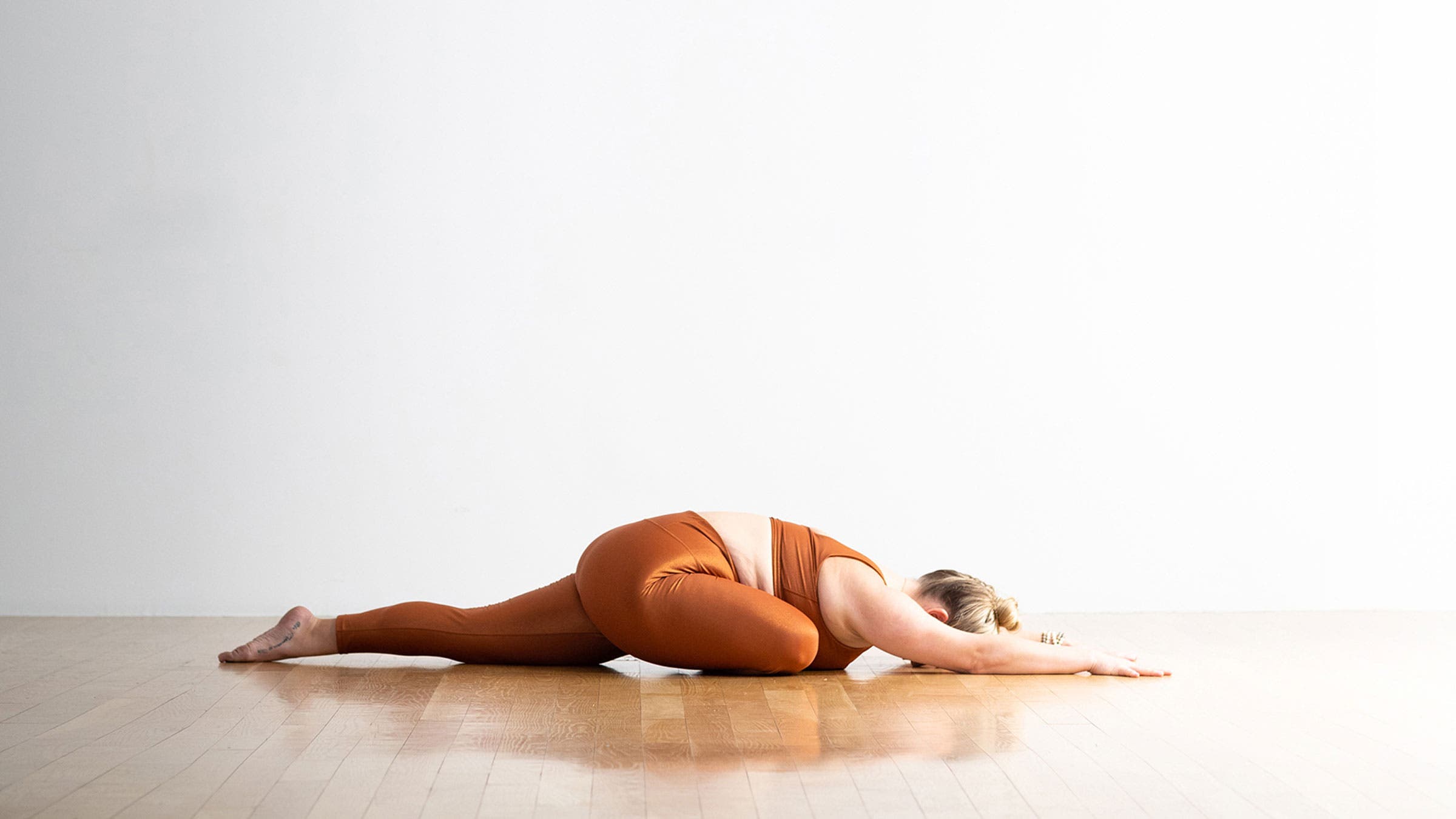
3. Pigeon Pose
Pigeon Pose (Kapotanasana) is another hip opener that can help ward off glute clenching. It targets and deeply stretches the glutes and external rotators, which can release any residual tightness and increase mobility. “[It also] encourages relaxation and a release of tension,” adds Goodrich.
How to Practice Pigeon Pose
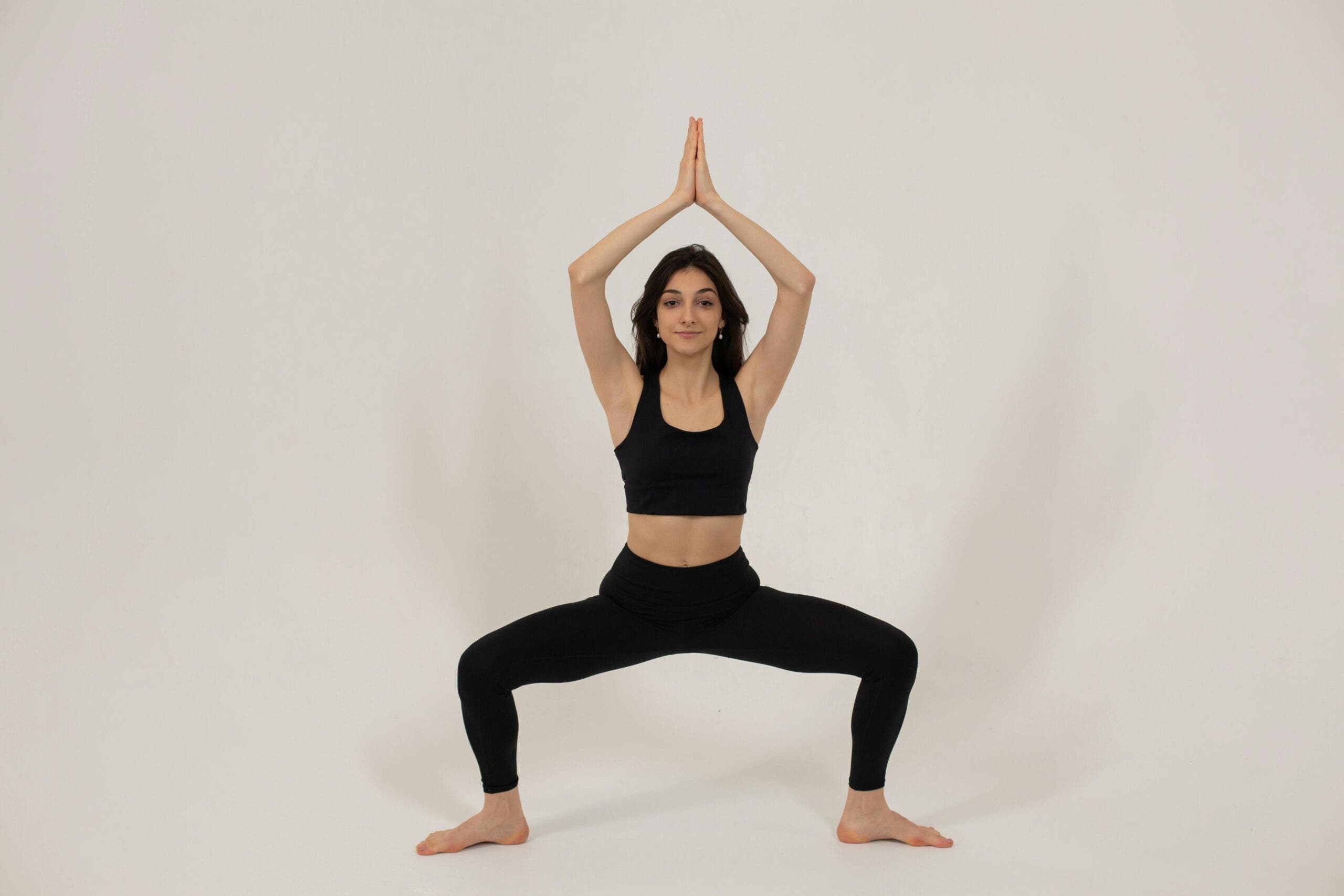
4. Goddess Pose
Goddess pose (Utkata Konasana) is a deep squat that both opens the hips and stretches the pelvic floor. “[This] encourages the glutes to activate to support the pelvis and actively externally rotate the hips,” says Heimann. “It’s a great pose to counteract the habit of gripping in the hips and butt while standing or sitting with the legs closer together.”
How to Practice Goddess Pose
5. Revolved Low Lunge
This twisting version of a Low Lunge is helpful for stopping glute clenching in its tracks, particularly when your back knee is on the mat, directly below your hip in a 90-degree angle. You’ll benefit from spinal rotation and hip mobility while stretching your hip flexors and strengthening your core. “[These are] the key players in balancing pelvic posture,” Heimann says.
How to Practice Revolved Low Lunge: She recommends setting up by bringing the right knee directly under the right hip, with the left foot forward. Hold the pelvis steady and bring the right hand to the floor or block before rotating the spine to the left.
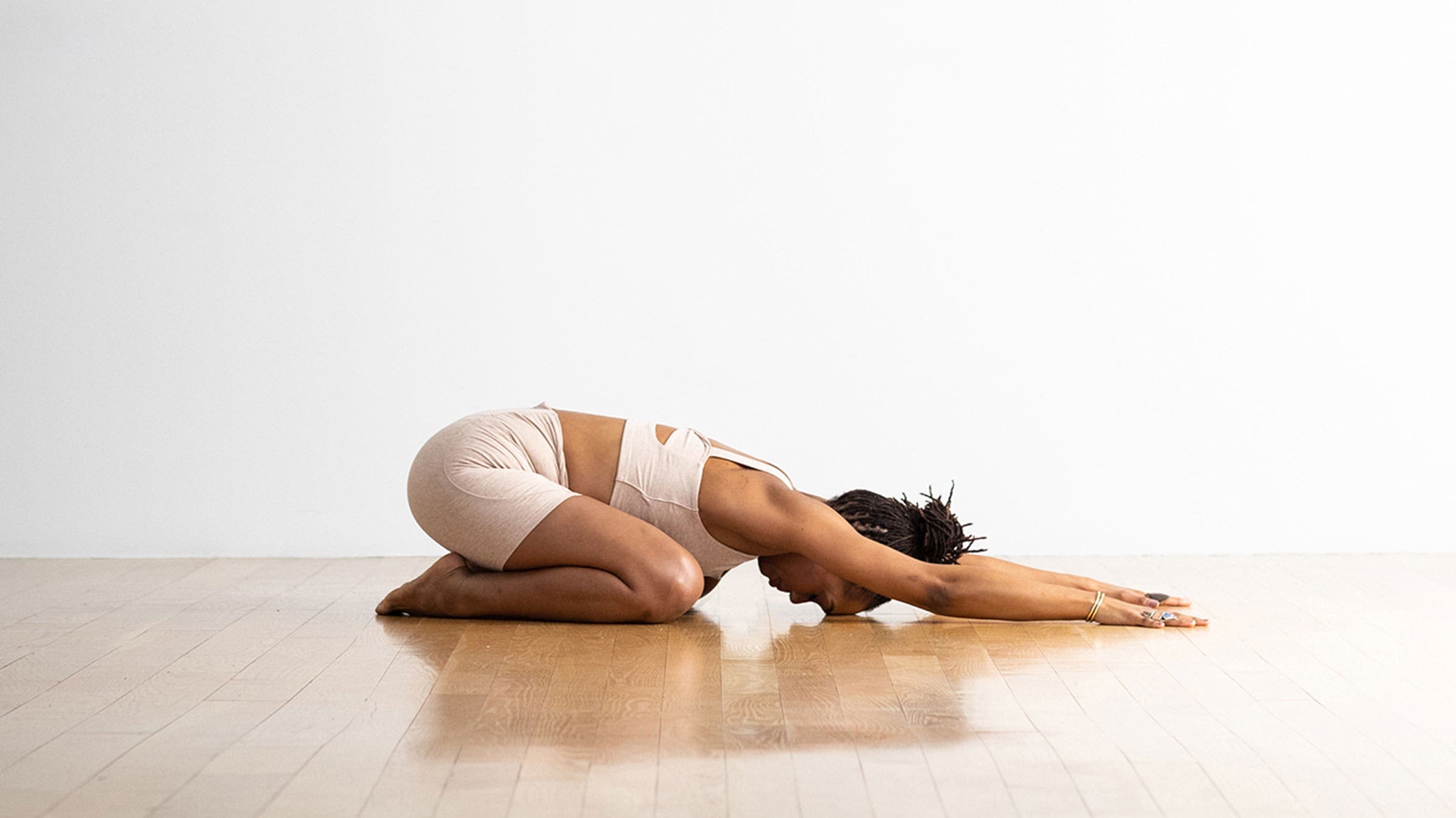
6. Child’s Pose
A classic resting pose that you can come back to at any point during your yoga practice, and even during your day-to-day activities. “[It] promotes overall relaxation, helping to release deep tension in the glutes and pelvic area,” says Goodrich.
How to Practice Child’s Pose
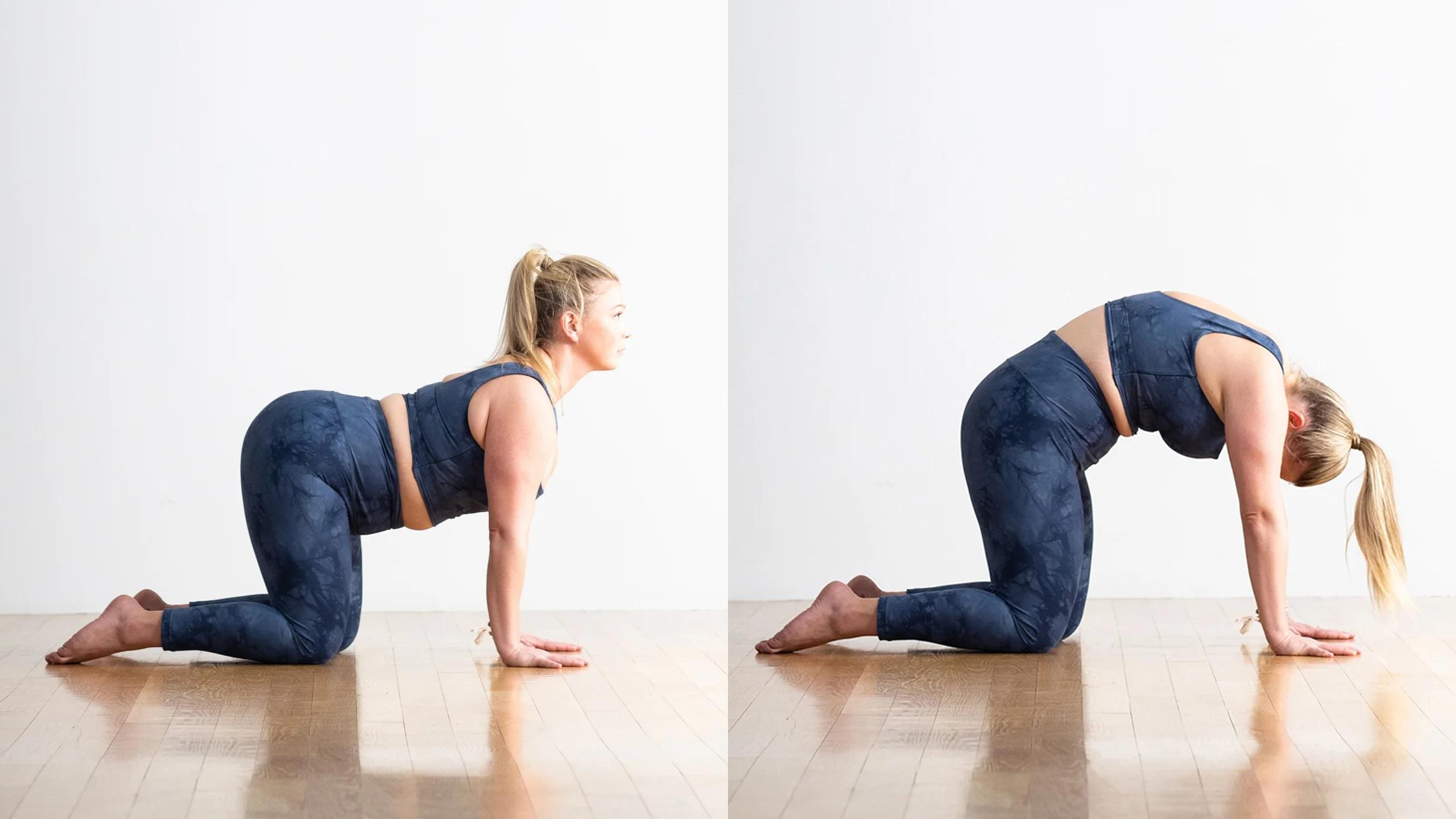
7. Cat-Cow
These two yoga poses back to back are an effective exercise in improving your pelvic mobility and restoring proper spinal alignment. Goodrich notes that these are particularly helpful poses for anyone who is a habitual tailbone tucker.
8. “Butt Breathing”
You’ve heard of breathwork (pranayama), but have you ever heard of “butt breathing”? This is a breathing exercise that Goodrich recommends for glute clenchers.
It’s similar to diaphragmatic or belly breathing, but specifically targets the release of tension in your glutes. “Imagine air traveling down to the pelvic floor muscles with each inhale,” she says. “[This] lowers the diaphragm and helps the body return to a relaxed ‘rest and digest’ state.”
Butt grippers can benefit from the yoga poses above, but also from simply bringing more awareness to their bodies and what muscles are clenching or holding tension—and, after all, isn’t that what yoga is for?